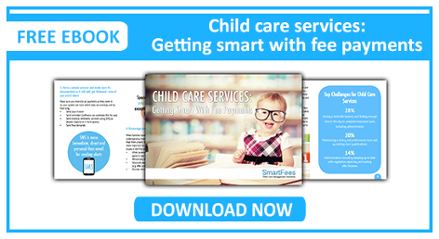Bad debts can run a business into the ground quicker than anything else. No one is immune, not even child care services: there’s currently around $1.2 billion of bad debt across Australia.
Bad debt is a three-pronged nightmare:
- The money you need isn’t there when you need it (to pay your own bills)
- Chasing bad debt and pursuing legal action costs time and money
- You may never recover the money you’re owed

In the worst-case scenario, you’re out-of-pocket even more than the debt itself; due to the costs you incurred trying to pursue it.
Consider it this way. Let’s assume your child care service operates on a 5 per cent net profit margin. Parents have failed to pay $20,000 in fees. To replace that debt, based on your net profit margin, you would need to make an extra $400,000.
So what is a bad debt and when do you decide that an outstanding invoice is a bad debt?
A debt is considered 'bad' when there is no longer a reasonable chance you will collect the money owed. This means you have tried all the your planned steps (you have planned your collections steps, right?) for follow up and still no result. You could just write off small amounts that you don’t consider worth pursuing: but beware, these small amounts add up over time.
When it comes to child care management, if you have a well-planned collections process and follow it consistently bad debts should be less than 1 per cent of turnover.
Unfortunately many businesses don’t have well run collections processes, so they don’t really know what to call bad. A rough guide may be to look at any debt that’s 12 weeks old or longer, and compare it to your run rate:
- Below 1% - reasonable, low concern
- Above 1% - a worrying level
- Well above 1% - deadly serious
There are also several warning signs that can tell you if a debt is going bad:
- The debtor continually promises to pay, with no action
- You get continuous excuses for non payment
- The debtor offers you less than the agreed amount
- You are told the debtor has financial problems
- The debtor sends cheques which bounce
- You can no longer contact the debtor
If any of these apply, you could well be facing bad debts.
Outstanding invoices and bad debts go hand in hand
When sorting out your collections process, they’re really two sides of the same coin.
Business consultancy firms can carry out benchmarking for you, but you may be able to get hold of some numbers and do it yourself. Child care industry associations may have average data available, so you can see how you perform against similar child care services.
Assessing your bad debt over time is also important. That way you can see if bad debts are growing, or if you’ve been through a bad patch and things are starting to look healthier again.
If you’re doing badly, and things are getting worse, it’s time to take action. That could vary from hiring a debt collection agency to pursuing legal action or another option may be to consider getting help to run the collections process for you.
You also need to calculate just how much debt your child care business can bear. There are ways to insure against bad debt, but it’s another extra cost at the end of the day.
To gain more insight into ways you can encourage your parents to pay their fees on time and avoid bad debts, download our free guide, ‘Child care services: Getting smart with fee payments’ by clicking the button below.



